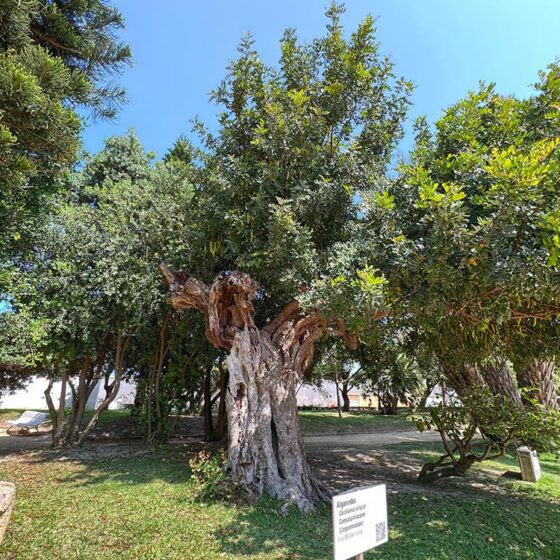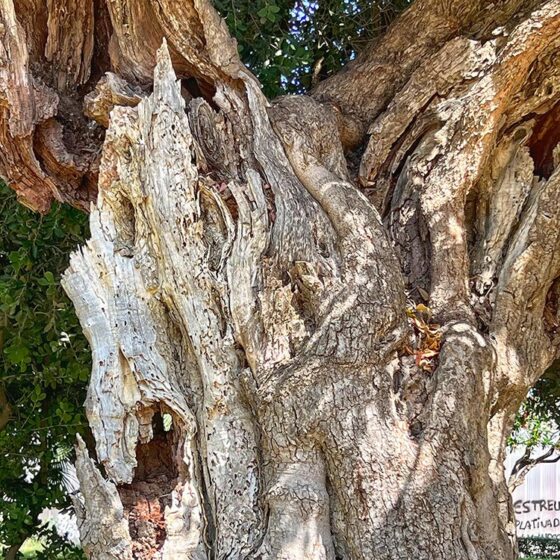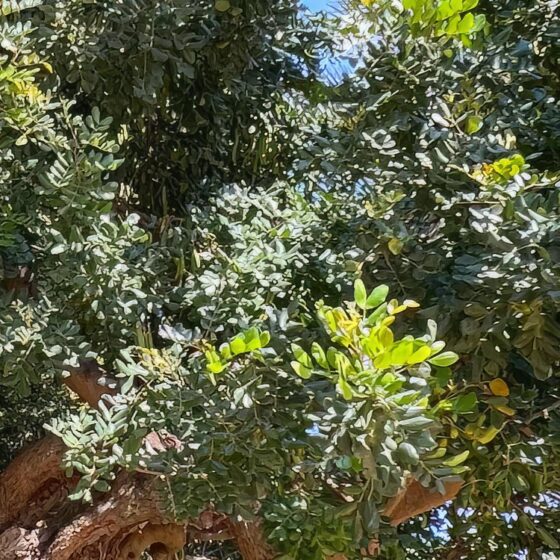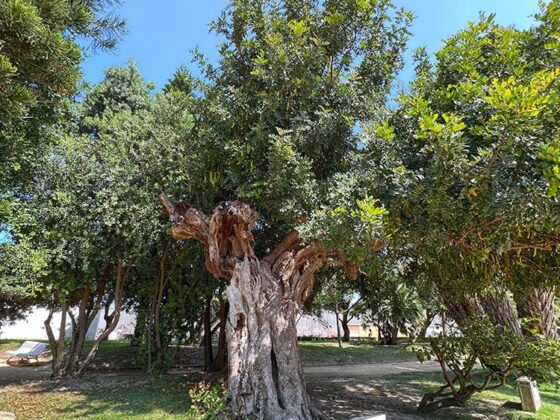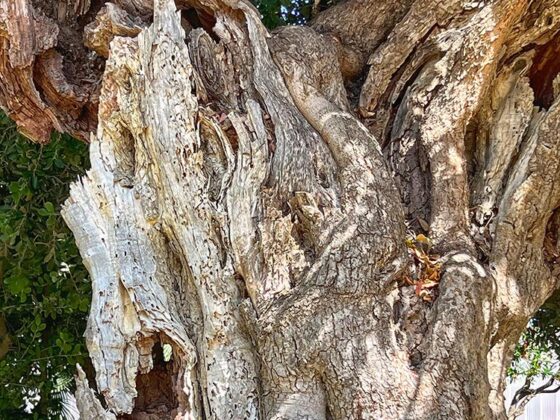The Carob Tree
Ceratonia siliqua
Ceratonia comes from the Greek name of the Carob tree Keratinia, from keras, keratos, which means horn, because of the appearance of its ripe fruits. Siliqua comes from the Latin and means pod, legume, by the shape of its fruits.
Evergreen tree 5-10 m. in height, with a rounded and very dense crown, a short, thick trunk, with a greyish coloured bark.
Alternate and paripinnate leaves, with 2-5 foliate leaves ranging from an ovate to elliptic shape, a leather-like texture and are dark green in the stem and a paler, more matt colour on the underside.
Inflorescences in cylindrical, spike clusters that are grown directly from the branches and trunk, with male, female and hermaphroditic flowers.
Fruit in the form of a leathery legume, green in colour that turns to a blackish colour when ripe. You can find 5-17 seeds per fruit, which are ovoid, smooth, brownish and wrapped in an edible sugary mucilaginous pulp.
Very resistant to drought, prefers limestone soils, and due to its extensive root system, settles well and deeply in the soil.
Its fruits are used as fodder for livestock


